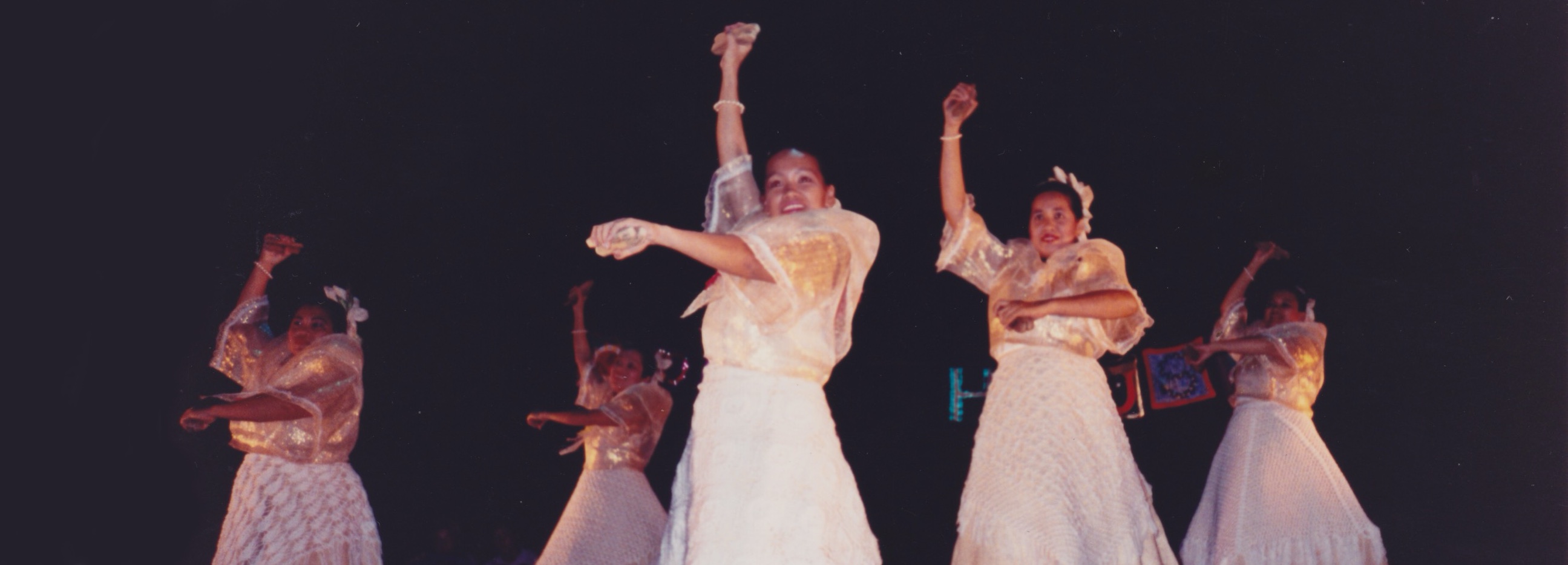Kulay Lupa Project
Text
Darwin, Brown's Mart
1992
Kulay Lupa and an Exploration into Biculturalism
Kulay Lupa (The Colour of Earth) is a Filipino cultural performing group. It began in 1991 after a Folk Dance and Folk Theatre workshop supported by Brown’s Mart and facilitated by Betchay Mondragon. Betchay trained with the Philippine Educational Theatre Association (PETA). Betchay was Executive Director of a region-wide Centre for People’s Culture and the Program Director of PETA-Broadcast and Film. Betchay came to Australia in 1990. She produced and/or directed a number of theatrical events reflecting the Territory’s multicultural communities. In 1992, she founded Kulay Lupa, a traditional Filipino performing ensemble and then Kilos Kultura, a Filipino youth group whose work revolved around the fusion of traditional Filipino and contemporary movement forms.
Kulay Lupa
Kulay Lupa started with a small group of 6 enthusiasts and has since grown to have 15 active performers. Kulay Lupa aimed to promote interest in and a better understanding of their country and their people through cultural performances that have been developed with a consciousness of professionalism.
Workshops
A series of workshops was given by David McMicken to this group of dancers. The aim was to look at Filipino folk and traditional dances and then to create a modern or contemporary dance that showed the change in the culture since coming to Darwin. The group, while eager to please, initially found the process of creating new material hard, but soon warmed to the different processes involved in the creation of a new dance.
Much of the important content for this project came from informal conversations about life in the Philippines and Darwin. We focussed on aspects that were clearly different. For this group, many aspects of life in the Philippines seemed to revolve around tasks such as washing, cleaning, cooking, food growing, gathering, and preparations. They noted that they could tell if someone came from a small village as they walked in single file as if walking through the rice paddy, even when they were in the city. They saw big changes when coming to Darwin such as; electric washing machines, and other white goods, less population, hotter weather, and more insects.
Assert One’s Culture
Using these ideas, we created a dance that showed differences. The desire was not to place a value on the activity but rather to show how culture is attached strongly to a place, and that some aspects of that culture are mobile, and can be carried to a new place. The question arose as to how you can assert one’s culture when you are out of the support networks of the living culture.
1992
Dance Development Office: David McMicken
[Under Brown’s Mart Community Arts – Executive Officer Ken Conway]

